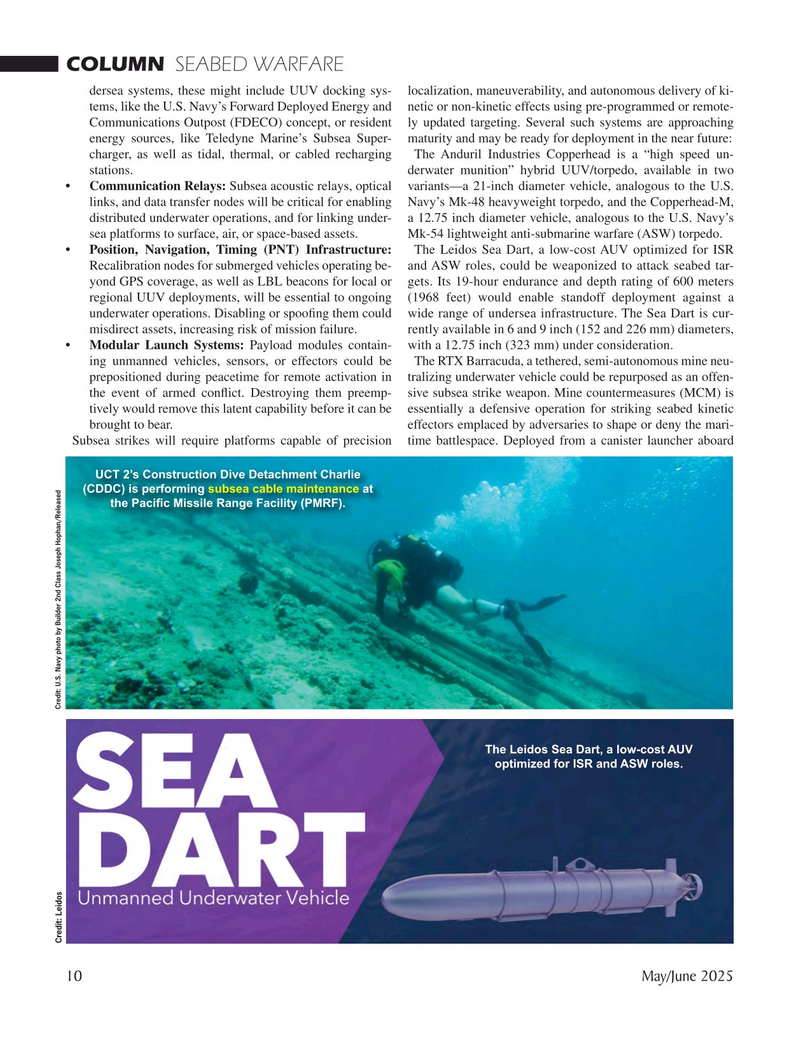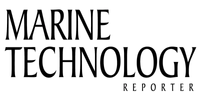
Page 10: of Marine Technology Magazine (May 2025)
Read this page in Pdf, Flash or Html5 edition of May 2025 Marine Technology Magazine
COLUMN SEABED WARFARE dersea systems, these might include UUV docking sys- localization, maneuverability, and autonomous delivery of ki- tems, like the U.S. Navy’s Forward Deployed Energy and netic or non-kinetic effects using pre-programmed or remote-
Communications Outpost (FDECO) concept, or resident ly updated targeting. Several such systems are approaching energy sources, like Teledyne Marine’s Subsea Super- maturity and may be ready for deployment in the near future: charger, as well as tidal, thermal, or cabled recharging The Anduril Industries Copperhead is a “high speed un- stations. derwater munition” hybrid UUV/torpedo, available in two • Communication Relays: Subsea acoustic relays, optical variants—a 21-inch diameter vehicle, analogous to the U.S. links, and data transfer nodes will be critical for enabling Navy’s Mk-48 heavyweight torpedo, and the Copperhead-M, distributed underwater operations, and for linking under- a 12.75 inch diameter vehicle, analogous to the U.S. Navy’s sea platforms to surface, air, or space-based assets. Mk-54 lightweight anti-submarine warfare (ASW) torpedo.
• Position, Navigation, Timing (PNT) Infrastructure: The Leidos Sea Dart, a low-cost AUV optimized for ISR
Recalibration nodes for submerged vehicles operating be- and ASW roles, could be weaponized to attack seabed tar- yond GPS coverage, as well as LBL beacons for local or gets. Its 19-hour endurance and depth rating of 600 meters regional UUV deployments, will be essential to ongoing (1968 feet) would enable standoff deployment against a underwater operations. Disabling or spoo

 9
9

 11
11
